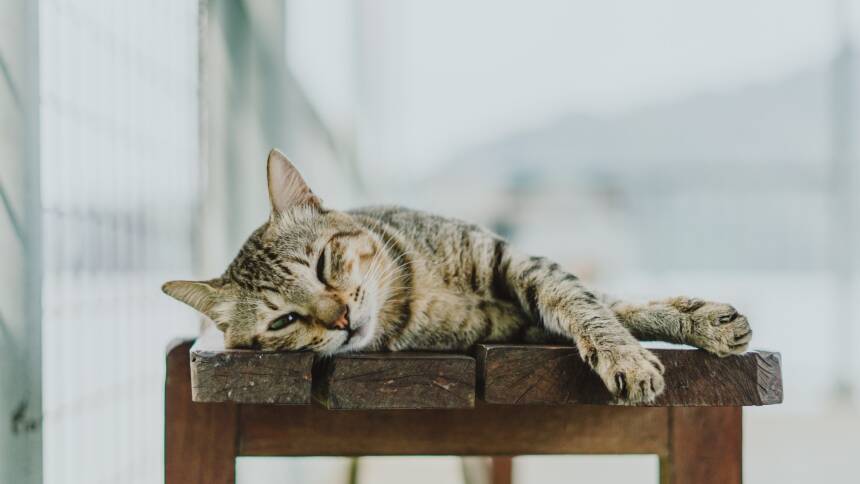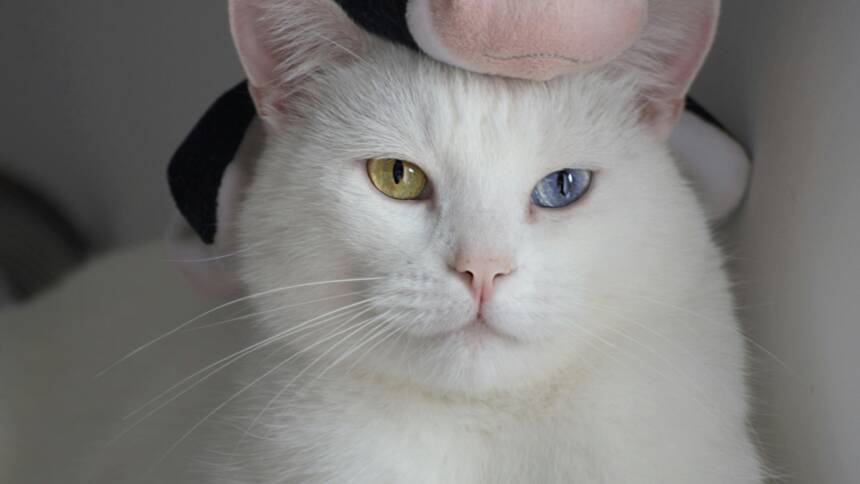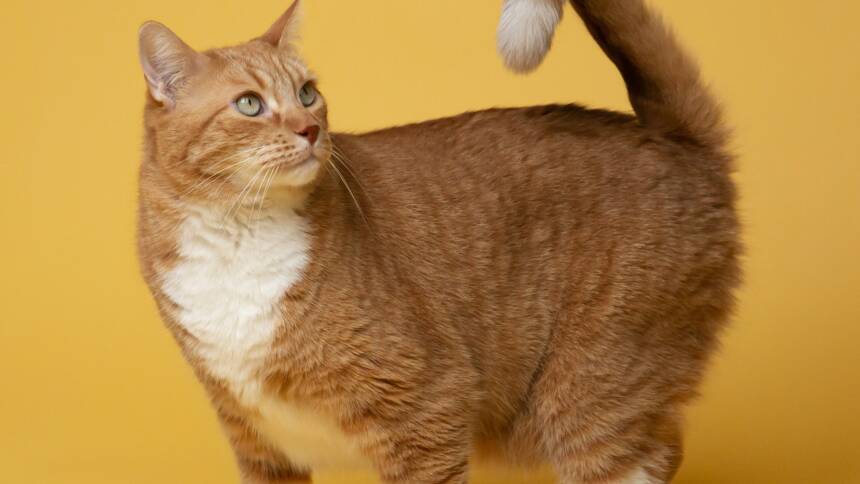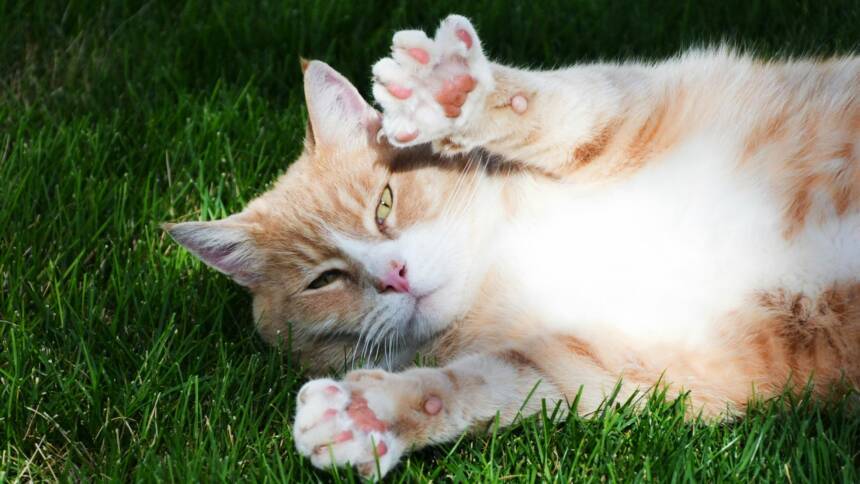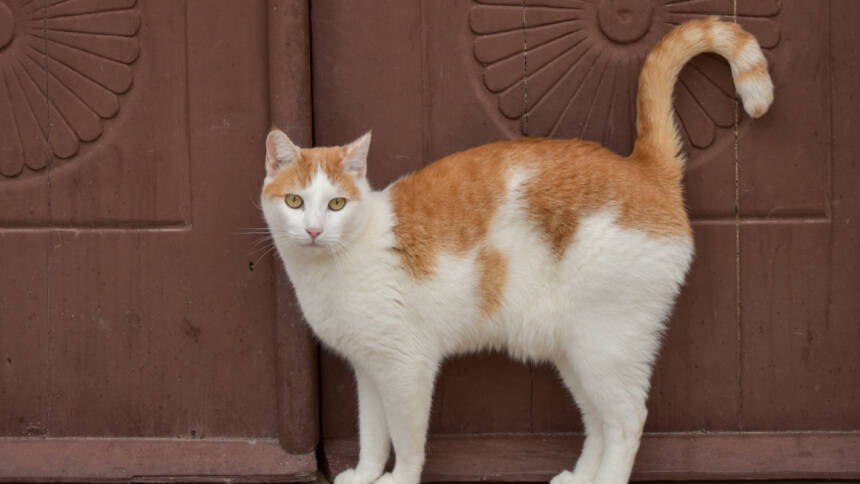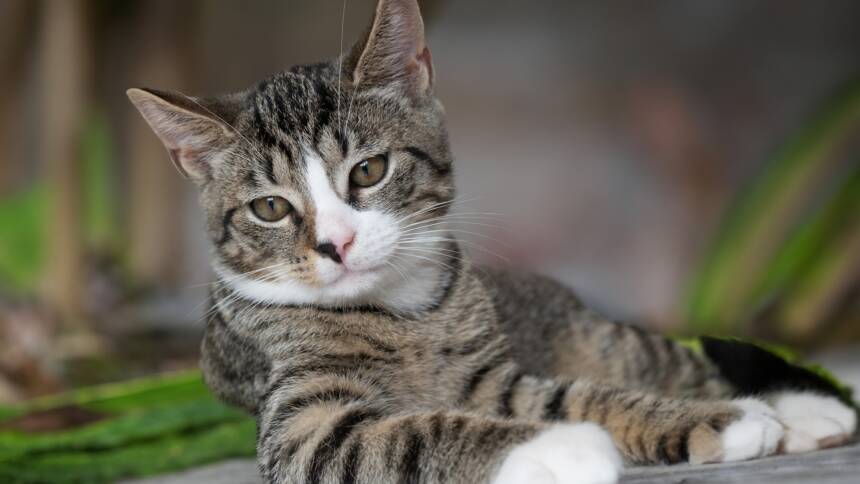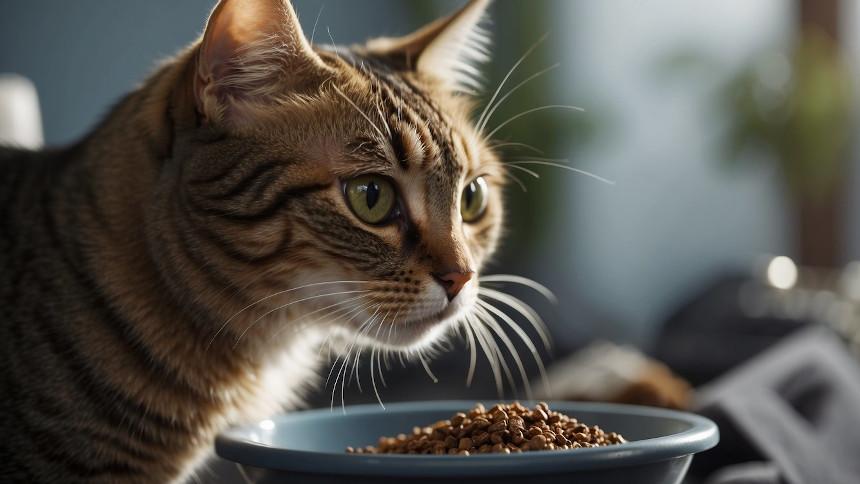Cats exhibit a variety of behaviors that often intrigue and delight their human companions, one of which is commonly known as “making biscuits.” This action, also referred to as kneading, involves the rhythmic pressing of a cat’s paws against a soft surface, such as a blanket, another animal, or a person’s lap. Kneading is characterized by the alternating motion of a cat’s front paws, pushing inwards and then releasing. It is often accompanied by purring and sometimes even slight nibbling or suckling on the surface being kneaded.
The behavior is instinctual and can be traced back to kittenhood. When kittens knead their mother’s mammary glands, it stimulates the flow of milk, allowing them to feed. As cats grow older, kneading continues to serve multiple purposes. It is a way for cats to express comfort and contentment, as well as mark territory with the scent glands located in their paws. It may also be a preparatory action for creating a cozy place to rest or sleep by softening the area.
Understanding why cats knead is helpful for owners to appreciate this peculiar but charming aspect of feline behavior. While it is a natural and positive indication of a cat’s well-being and comfort, furniture and delicate textiles can suffer from a cat’s persistent kneading, prompting owners to find gentle ways to protect their belongings without discouraging this instinctive activity.
Understanding Cat Kneading
Cat kneading, commonly referred to as “making biscuits,” is a repetitive motion where cats push their paws in and out against a soft surface. It’s a behavior that originates from kittenhood and carries throughout their lives, serving as a source of comfort and a window into their instinctual past.
The Instinctual Foundations
Kneading is an instinctual behavior that cats begin displaying as kittens during nursing. When kittens knead their mother’s belly, it stimulates milk production, fulfilling a vital survival function. This action is deeply ingrained, and even as cats grow, the behavior persists even though its original purpose—milk stimulation—is no longer a factor.
- Primary Instinctual Drivers of Kneading:
- Nursing: Initiates mother’s milk flow
- Comfort: Associated with the satisfaction of a full belly and the warmth from their mother
- Territorial: Adult cats may knead to mark their territory with scent glands in their paws
Kneading Throughout the Growth Stages
The kneading behavior witnessed in kittens while nursing from their mother does not merely fade away as they grow older. Instead, it evolves. Cats continue to knead into adulthood, and it’s believed that this behavior is retained as a source of comfort—reminiscent of the safety and contentment felt as a kitten.
- Kneading During Different Life Stages:
- Kittens: Directly tied to nursing and the interaction between kitten and mother
- Adolescent Cats: May knead in moments of contentment or when seeking comfort
- Adult Cats: Often knead before resting or when experiencing feelings of safety and affection
Kneading is more than a quirk—it is an enduring behavior that transcends a cat’s growth phases, linking their present behavior directly to their formative first weeks of life.
The Science Behind Kneading
Kneading is a common behavior in cats, often associated with comfort and contentment. Scientific insights reveal its behavioral and physiological significance, molded by instinct and positive reinforcement.
Behavioral Significance
Kneading in cats, sometimes colloquially referred to as “making biscuits,” is rooted in instinctual behavior that begins at birth. Kittens knead their mother’s belly to stimulate milk flow. As mature cats, they often continue this behavior, kneading soft surfaces which may signify a display of affection or a method of marking territory through scent glands in their paws.
- Behavioral aspects include:
- Comfort: They often knead when feeling happy or content, creating a comfortable resting area.
- Territory marking: Scent glands in their paws leave a smell that signals their presence to other animals.
Physiological Responses
The act of kneading can trigger various physiological responses in cats. Oxytocin, often called the “love hormone,” may be released, reinforcing feelings of happiness and contentment.
- Important physiological responses:
- Oxytocin release: Associated with bonding and stress relief, oxytocin may contribute to the pleasure cats feel during kneading.
- Purring: Cats may purr while kneading, which can be a self-soothing mechanism and a sign of well-being.
- Stress reduction: Kneading behaviors can help reduce stress and soothe the cat.
Veterinarians often interpret regular kneading as a sign of a healthy and emotionally well-adjusted cat. However, excessive kneading, especially if accompanied by signs of distress, could warrant veterinary attention.
Interpreting Kneading Behaviors
When cats knead, they are communicating a variety of emotional states, from the warmth of affection to potential discomfort. Observing the context and associated behaviors is crucial for a proper interpretation.
Signs of Affection and Comfort
Affection and contentment are frequently expressed through a cat’s kneading, often seen as a rhythmic pressing of paws against soft objects like blankets or their owner’s lap. Behaviors such as purring and a relaxed posture accompany kneading when it signifies happiness and a sense of security.
- Typical indicators of affectionate kneading:
- Soft purring sounds
- Half-closed eyes
- A gentle rhythm
These actions are rooted in kittenhood when they knead their mother for milk, carrying over as a comforting gesture into adulthood.
Signs of Stress or Pain
Conversely, kneading may also reveal stress or pain. When kneading is accompanied by unusual vocalizations or seems compulsive, it could indicate distress or discomfort.
- Possible signs of kneading due to stress or pain:
- Persistent kneading on a hard surface
- Accompanied by meowing or growling
- Changes in appetite or behavior
A cat behaviorist can provide insights and recommend strategies to alleviate stress or discomfort if these signs persist.
Kneading and Cat Health
In the context of cat health, kneading behavior can signify different things, ranging from a state of well-being to potential health issues that merit attention.
When Kneading Indicates Well-Being
Cats often knead to express contentment and security. When a cat presses its paws rhythmically against a soft surface, it is usually a sign that they are in a state of relaxation and trust. This behavior stems from kittenhood, where kneading was a way to stimulate milk flow from the mother. For adult cats, this action is typically carried over as a means to convey comfort and satisfaction.
When to Consult a Vet
While kneading is generally a healthy display, certain changes in this behavior could indicate stress or discomfort. Owners should observe for abnormal signs such as:
- Excessive kneading: If a cat kneads more frequently or intensely than usual, it could be a response to stress or a way to self-soothe.
- Painful reactions: A display of discomfort during kneading, such as wincing or withdrawing suddenly, may suggest pain or injury.
- Alterations in habits: If there is a sudden change in the duration, frequency, or intensity of kneading.
In any of these cases, it’s prudent to consult a vet to rule out underlying health issues. Vets can offer guidance and possibly redirect the behavior if it stems from stress or discomfort. It is important for an owner to monitor their cat’s behavior and seek professional advice if a cat’s kneading is paired with any signs of poor health or distress.
Managing Kneading Behavior
In the care of a pet cat, understanding and managing their natural kneading behavior is important to both pet and owner. Kneading can affect various household items, but with effective strategies, one can protect their belongings and provide appropriate alternatives for their cat.
Protecting Furniture and Soft Surfaces
Cats often knead on soft surfaces, which can sometimes lead to damage, especially if their claws are sharp. To protect furniture and other soft objects, owners can provide their cats with designated kneading pads or blankets. These items can be layered over frequently targeted areas to safeguard them from a cat’s claws. Additionally, routine claw trimming is a preventive measure that can reduce potential harm to furniture, while still allowing cats to engage in their instinctual behavior.
- Furniture Covers: Use washable covers specifically made to fit furniture.
- Cat Beds: Position comfortable cat beds in preferred kneading spots.
- Regular Claw Trimming: Keep claws trimmed to minimize damage without impeding kneading.
Training and Redirecting Kneading
Redirecting a cat’s kneading to appropriate alternatives can be a gentle way to manage this behavior. Training involves positive reinforcement; praising and treating the cat when they choose an acceptable place to knead supports this transition. Providing enrichment through a variety of tactile items can keep cats stimulated and content. Examples include:
- Scratching Posts/Pads: Offer various textures and positions (horizontal and vertical).
- Kneading-Specific Toys: Introduce toys designed for kneading, like soft stuffed animals or interactive mats.
By combining protective strategies with positive reinforcement and environmental enrichment, owners can successfully manage their cat’s kneading behavior.
Kneading in Different Environments
Kneading behavior in cats is a nuanced action that serves various purposes, influenced by their environment and background. Whether in domestic bliss or the wild terrains where their ancestors roamed, cats exhibit this behavior which can be tied to instinctual habits and communicative needs.
Domestic vs. Wild Ancestors
Domestic cats often knead soft surfaces as an expression of comfort, replicating the motion they performed as kittens to stimulate milk flow from their mother. The roots of this behavior are traced to their wild ancestors, who would knead to pat down foliage to create a resting spot or to check for predators and prey hidden beneath the grass. Territorial creatures both, domestic cats and their wild counterparts use kneading as part of scent-marking practices, with scent glands located in their paws depositing their unique signature within their chosen territory.
Adapting to a New Home
When domestic cats are introduced to a new home, kneading can be a sign they are adjusting to their environment. It allows them to mark their new territory with their scent, making the unknown space familiar and secure. Unlike their wild ancestors, domestic cats’ kneading in a new home does not have the same survival-based origins, but it is still a critical aspect of establishing their comfort and expressing their presence within the home.
A Deep Dive into Cat Paws and Kneading
In exploring the mystery of cats kneading, which is often likened to making biscuits, it’s essential to understand the intricacies of their paws and the tactile experience this behavior entails.
The Anatomy of Cat Paws
Cats have a distinct anatomical structure in their paws that equips them for their daily activities. The front paws are particularly versatile and contain scent glands that allow cats to mark their territory. On each paw, a cat typically has five toes on the front, with a dewclaw (much like a thumb) that is higher up on the leg, and four on the back. Claws are another crucial feature, sharp and retractable, granting them the ability to latch onto various surfaces without much wear when not in use.
Regular trimming is often suggested to keep these claws at a safe length, both for the cat and for the household items they often knead on.
The Sensory Experience of Kneading
Kneading can be considered a multi-sensory experience for cats. The actions of pushing and pulling their paws against a soft surface are not random; they’re deliberate and rhythmic. The motion stimulates the scent glands located in the soft pads of the paws, marking their environment with a scent undetectable to humans.
The act of kneading often engages the cat’s front paws, where the claws extend and retract into the surface. This action can fulfill various needs, such as preparing a comfortable resting area or expressing contentment. Furthermore, precise sensory inputs back to the cat’s central nervous system may provide a comforting feedback loop, reinforcing the behavior.
Myths and Misconceptions About Kneading
In exploring the behavior of cats, kneading is often misunderstood. This section clarifies common falsehoods and provides insight into the diverse behaviors of individual cats.
Separating Fact from Fiction
Myth: Cats knead only to show affection.
Fact: Kneading can signify several aspects of a cat’s instincts, from affection to territorial marking. Cats have scent glands in their paws, and when they knead, they may also be marking their territory with their unique scent.
Myth: All cats knead in the same way for the same reasons.
Fact: Kneading is a behavior with multiple motivations including comfort, instinct, and preparation for rest. It is not solely a sign of contentment or a prelude to sleep.
Myth: Kneading is a learned behavior from observing other cats.
Fact: Kneading is an instinctive behavior, often beginning in kittenhood when nursing to stimulate milk flow. Cats do not need to learn this behavior from others.
Understanding Unique Feline Personalities
Cats exhibit kneading behavior in many forms, reflective of their unique personalities:
- Reserved Cats: May knead less frequently or only in private, as an expression of comfort in a secure space.
- Outgoing Cats: Often knead more openly and may use kneading as a form of greeting or seeking attention.
Cats also show variations in the intensity and objects of their kneading, which can be influenced by their environment and how they are feeling. Kneading is not universally indicative of the same emotion or intention in every cat.
